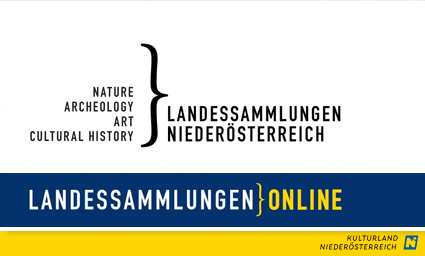
Preservation and Restoration
HEAD OF DEPARTMENT
Mag. Eleonora Weixelbaumer
Office of the Lower Austrian Federal Government, Department of Art and Culture
A-3100 St. Pölten, Kulturdepot, Schanze 5
noe-konservierung.restaurierung@noel.gv.at
+43/2742/9005/15948
Team
Univ.-Doz. Dr. Kristina Kojan Goluza, conservation of archaeological finds
Mag. Michael Bollwein, conservation of objects and frames
Christian Lindtner, arthandling specialist
Martin Sellner, arthandling specialist
Huberta Trois, cataloguing specialist, frames
GUIDING PRINCIPLE
The Conservation and Restoration department is responsible for the care and maintenance of roughly 6.5 million objects currently held by the State Collections of Lower Austria. The collections consist of historically and artistically significant works of European art and culture, including everyday objects. Drawn from the most diverse periods of several thousand years of history up to the present day, they are the cultural memory of the province.
An interdisciplinary team of experts with various areas of expertise develops long-term conservation strategies and storage concepts for the respective collection areas, but also tailored solutions for individual objects. Their goal is to ensure that as many people and generations as possible have an opportunity to experience and discover art, culture, and the context of past epochs with a wide range of diverse, well-preserved objects.
The Conservation and Restoration department of the State Collections of Lower Austria creates conditions appropriate for the preservation and maintenance of the extensive collection holdings, and improves upon them. This requires not only appropriate specialised staff, but also adequate storage space. The collection holdings are currently spread over around ten storage locations with a total area of approximately 14,000 square metres; they are housed and held to the best possible conservation standards.
LOAN TRANSPORT
Apart from ongoing maintenance of the collection holdings, one of the main focuses of this department’s work is the preparation of artworks for national and international loan – always with consideration to the stringent requirements of state-of-the-art conservation and in compliance with international museum loan standards.
Every artwork presented to the public in the context of an exhibition must be examined and its condition assessed in advance. The responsible specialist conservators use this assessment to draw up an individually tailored package of measures that takes into account both conservational and art- and cultural-historical aspects of the artwork.
This process is carried out in close collaboration with the curators. Initial steps include the written and photographic assessment and documentation of the work, taking into account its previous history and with reference to the collection’s own archives.
CONSERVATION AND RESTORATION
The scope of possible further measures is very broad and can range from simple care and maintenance to extensive restoration.
The main focus here is conservation; this means that the artwork’s original substance is safeguarded, consolidated, maintained, and protected to the greatest extent possible from further degradation. Further restorative interventions such as puttying, replacement of missing parts, and optically harmonising retouching are carried out as required. The in-house conservation and restoration team also handles the final framing of paintings and graphic works including the production of mats or passe-partouts.
PREVENTIVE CONSERVATION
Our preventive conservational work is geared towards preventive measures: even minimal intervention can sometimes offer long-lasting protection from damage. Specific examples include the surveying and evaluation of atmospheric data and light exposure. Another is the adaptation of historical frames to create integrated, climate-controlled showcases, a process that involves combining historical handicraft techniques such as carpentry and gilding with the latest materials. The Conservation and Restoration department employs innovative solutions that are specially adapted to the respective artwork or object and its needs.
ARTHANDLING – TRANSPORT – PACKING
Another key focus includes the professional packing and transport of loaned artworks and objects travelling between storage facilities and the institutions where they will be displayed. Several times a year, for example, exhibition venues within the Niederösterreichische Kulturwirtschaft GesmbH (NÖKU Group) are filled with numerous works from the Lower Austrian Regional Collections. The arthandling team supervises this process with logistical support from the Regional Collections registrar’s office. In addition to finding individual packing solutions for artworks with their various formats and surfaces, the team uses specially manufactured climate-buffered crates and special art containers. The packed works are conveyed by the province’s own transport vehicles or by specially requested art shipping companies.
RESEARCH AND TRAINING
These everyday responsibilities are complemented by a focus on scholarly and educational endeavours such as research and training. We cooperate with the Academy of Fine Arts Vienna and the University of Applied Arts Vienna, whose institutes for conservation and restoration offer important platforms for applied research, knowledge sharing, and training.
Special interests include the research on used materials and technologies in an art and cultural historical context, as well as preventive conservation.
In a cooperation with the Center for Museum Collections Management at Danube University Krems, the department is also conducting research on current topics and working on solutions to specific questions and issues related to the Regional Collections. Findings are published in the annual activity report put out by the Center for Museum Collections Management and the State Collections of Lower Austria, among other outlets.



